Friday, June 27, 2008
 Traditional oil painting technique frequently start with the artist sketching the stature onto the canvas with charcoal or a "rinse," which is thinned paint. Oil paint can be varied with turpentine or artiste grade mineral spirits or other type of solvents to make a thinner, faster aeration paint. Then the artiste builds the figure in sheets. An essential rule of oil paint appliance is 'fat over lean.' This means that every additional layer of paint must be a bit oilier than the layer beneath, to allow correct drying. As a painting gets extra layers, the paint have to get oilier or the last painting will break and peel. There are many other painting medium that can be use in oil painting, which includes resins, cold wax, and varnishes. These additional medium can assist the painter in adjusting the transparency of the paint, the shine of the paint, the thickness or 'body' of the paint, and the aptitude of the paint to hold or hide the brush stroke.
Traditional oil painting technique frequently start with the artist sketching the stature onto the canvas with charcoal or a "rinse," which is thinned paint. Oil paint can be varied with turpentine or artiste grade mineral spirits or other type of solvents to make a thinner, faster aeration paint. Then the artiste builds the figure in sheets. An essential rule of oil paint appliance is 'fat over lean.' This means that every additional layer of paint must be a bit oilier than the layer beneath, to allow correct drying. As a painting gets extra layers, the paint have to get oilier or the last painting will break and peel. There are many other painting medium that can be use in oil painting, which includes resins, cold wax, and varnishes. These additional medium can assist the painter in adjusting the transparency of the paint, the shine of the paint, the thickness or 'body' of the paint, and the aptitude of the paint to hold or hide the brush stroke.These variables are strongly related to the expressive ability of oil paint. When we look at original oil paintings, the various character of oil paint permit one to sense the choice the artiste made as they apply the paint. For the spectator, the paint is still, but for the artiste, the oil paint is a fluid or semi-fluid and must be stirred 'onto' the painting surface.
Wednesday, June 25, 2008
 Portrait photography is a trendy commercial industry all over the earth. Numerous people enjoy having professionally finished family portraits to hang up in their homes, or special portraits to remember certain events, such as graduations or wedding ceremony.
Portrait photography is a trendy commercial industry all over the earth. Numerous people enjoy having professionally finished family portraits to hang up in their homes, or special portraits to remember certain events, such as graduations or wedding ceremony.Since the dawn of picture making, people have prepared portraits. The attractiveness of the daguerreotype in the heart of the 19th century was due in great part to the demand for low-priced portraiture. Studios spring up in cities around the earth, a few cranking out more than 500 plates a day. The technique of these early works reflects the technical challenges connected with 30-second exposure times and the painterly artistic of the time. Subjects were usually seated next to plain backgrounds and lit with the soft brightness of an overhead window and anything else might be reflected with mirrors.
As photographic system developed, a fearless group of photographers took their talent out of the studio and onto battleground, across oceans and into distant wilderness.
Tuesday, June 24, 2008
 The procedures of oil painting vary from artist to artist, but often include certain steps. First, the artiste prepares the surface. Even though surfaces like pressed wood, linoleum, wooden panel as well as cardboard have been used, the most admired surface since the 16th century is the canvas, although lots of artists used pane through the 17th century and further than. Before that it was pane, which is more costly, heavier, less easy to transfer, and prone to distort or split in poor circumstances.
The procedures of oil painting vary from artist to artist, but often include certain steps. First, the artiste prepares the surface. Even though surfaces like pressed wood, linoleum, wooden panel as well as cardboard have been used, the most admired surface since the 16th century is the canvas, although lots of artists used pane through the 17th century and further than. Before that it was pane, which is more costly, heavier, less easy to transfer, and prone to distort or split in poor circumstances. The artist might draft an outline of their subject prior to applying color to the surface. “Pigment” may be any number of normal substances with color, such as sulphur for golden or cobalt for navy. The pigment is mixed with oil, typically linseed oil but additional oils may be used as well. The various oils dried up differently creating mixed effects.
Traditionally, an artiste mixed his or her own paints for every project. Mixing and Handling the raw pigments and mediums was excessive to transport. This altered in the late 1800’s, when oil paint in tube became broadly available. Artists could mix colors rapidly and simply without having to crush their own pigments. Also, the portability of pipe paints allowable for plein air, or outdoor work of art.
Thursday, June 19, 2008
 Eastern art has usually worked in a style similar to Western medieval painting, namely a attention on surface pattern and local color (meaning the plain color of an item, such as essential red intended for a red robe, besides than the modulations of that color brought about by glow, gloom and reflection). A feature of this style is that the local color is often distinct by an outline (a contemporary equal is the cartoon). This is clear in, for example, the art of
Eastern art has usually worked in a style similar to Western medieval painting, namely a attention on surface pattern and local color (meaning the plain color of an item, such as essential red intended for a red robe, besides than the modulations of that color brought about by glow, gloom and reflection). A feature of this style is that the local color is often distinct by an outline (a contemporary equal is the cartoon). This is clear in, for example, the art of Spiritual Islamic painting forbids iconography, and express religious thoughts through geometric design instead. Yet, there are a lot of Islamic paintings which display religious theme and scenes of story common among the three main monotheistic faith of Islam, Christianity, as well as Judaism.
Monday, June 16, 2008
 All over Europe, the late middle ages favored a decorative and courtly manner known as the International Style. By the early 15th century, however, people in Florence and other towns of central Italy genuinely believed they were living in a new era—the Renaissance. Not only did the Renaissance bring new, more naturalistic styles, but also increased patronage from private individuals, and new, secular subjects.
All over Europe, the late middle ages favored a decorative and courtly manner known as the International Style. By the early 15th century, however, people in Florence and other towns of central Italy genuinely believed they were living in a new era—the Renaissance. Not only did the Renaissance bring new, more naturalistic styles, but also increased patronage from private individuals, and new, secular subjects. In the fifteenth century, artists learned to depict the visual world in a naturalistic manner. They extended their understanding of light and shadow, of space and anatomy. The idealized statuary of classical antiquity served as models, while in architecture the classical orders were applied to Renaissance buildings.
The prosperous mercantile economy of Florence helped to nurture the arts. Commissions came from the church, the state, and wealthy families. Classical as well as biblical heroes and heroines were portrayed as examples of virtue and moral fortitude.
However, to view the art of the Renaissance as a mere conquest of naturalistic representation would overlook the complexity of the period. Carlo Crivelli painted sumptuous altarpieces in a boldly ornamental manner, and Cosimo Tura frequently departed from logical, naturalistic norms in favor of an energetic idiom with an eccentric elegance. Portraiture flourished during the Renaissance, and the Venetians, foremost among them Giorgione and Bellini, excelled in their depictions of pastoral landscape.Read more...>
Friday, June 13, 2008
 Paint applied to exterior wood must withstand yearly extremes of both temperature and humidity. While never expected to be more than a temporary physical shield--requiring reapplication every 5 to 8 years--its importance should not be minimized. Because one of the main causes of wood deterioration is moisture penetration, a primary purpose for painting wood is to exclude such moisture, thereby slowing deterioration not only of a building's exterior siding and decorative features but, ultimately, its underlying structural members. Another important purpose for painting wood is, of course, to define and accent architectural features and to improve appearance.
Paint applied to exterior wood must withstand yearly extremes of both temperature and humidity. While never expected to be more than a temporary physical shield--requiring reapplication every 5 to 8 years--its importance should not be minimized. Because one of the main causes of wood deterioration is moisture penetration, a primary purpose for painting wood is to exclude such moisture, thereby slowing deterioration not only of a building's exterior siding and decorative features but, ultimately, its underlying structural members. Another important purpose for painting wood is, of course, to define and accent architectural features and to improve appearance.Peale was a major figure in both art and science during America's revolutionary and federal periods. In 1786 he converted the painting gallery attached to his Philadelphia home into a museum of "Natural Curiosities." Peale's enthusiasm for learning was such that he named most of his seventeen children after famous scientists or painters.
 Peale cleverly devised a leaning posture for the husband so that his portly figure would not overshadow his petite wife. This unusual, reclining attitude binds the couple together and tells of their love. The spyglass and exotic parrot may indicate Laming's mercantile interest in foreign shipping. Mrs. Laming's fruit and flowers, although symbols of fertility, might refer to her own gardening activities. The detailed attention to the bird, plants, scenery, telescope, and complicated poses attests to Peale's encyclopedic range of interests.Read more...>
Peale cleverly devised a leaning posture for the husband so that his portly figure would not overshadow his petite wife. This unusual, reclining attitude binds the couple together and tells of their love. The spyglass and exotic parrot may indicate Laming's mercantile interest in foreign shipping. Mrs. Laming's fruit and flowers, although symbols of fertility, might refer to her own gardening activities. The detailed attention to the bird, plants, scenery, telescope, and complicated poses attests to Peale's encyclopedic range of interests.Read more...>Thursday, June 12, 2008
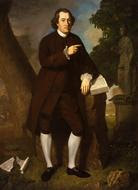 John Beale Bordley, a Maryland planter and judge, raised the funds to send Charles Willson Peale to London, where the young artist trained under Benjamin West for two years. Bordley also helped Peale obtain his first major commission in America—two life-size portraits, including this allegorical work, that were to be shipped to London as declarations of colonial independence.
John Beale Bordley, a Maryland planter and judge, raised the funds to send Charles Willson Peale to London, where the young artist trained under Benjamin West for two years. Bordley also helped Peale obtain his first major commission in America—two life-size portraits, including this allegorical work, that were to be shipped to London as declarations of colonial independence. The theme of tyranny dominates the foreground. Trained as a lawyer, Bordley raises his hand in a gesture of debate. He points to a statue of British Liberty holding the scales of justice, reminding English viewers that the American colonists lived under British law and thus were entitled to the rights it guaranteed. Britain's violation of these rights is signified by the legal document, lying torn and discarded at Bordley's feet. Growing at the statue's base is jimsonweed, a poisonous plant, which serves to warn of the deadly consequences of any attack on American civil liberties.
America's agricultural self-sufficiency is referred to in the background, which depicts Bordley's plantation on Wye Island in the Chesapeake Bay, where Peale painted the canvas. A peach tree and a packhorse signify America's abundance, while the grazing sheep suggest freedom from reliance on imported British woolens.
Wednesday, June 11, 2008
 Much art of the American colonial period consisted of portraits, as settlers sought to establish their identities in a new world. After the new nation achieved its independence, landscapes and scenes of native flora, fauna, and folk customs began to express its unique qualities and illustrate its untapped resources.
Much art of the American colonial period consisted of portraits, as settlers sought to establish their identities in a new world. After the new nation achieved its independence, landscapes and scenes of native flora, fauna, and folk customs began to express its unique qualities and illustrate its untapped resources.John Singleton Copley followed West's example in depicting past and present occurrences with believable accessories and settings. Gilbert Stuart, who studied with West in London, revitalized the concept of "Grand Manner" portraiture; his Skater is invigorated with a sense of immediacy and activity.Read more...>
Tuesday, June 10, 2008
 The history of Chinese painting can be dated back to the Neolithic age six thousand years ago. It was at this time that Chinese artists began to use brushes in their work. Chinese art and painting have evolved considerable after many years and influences from other cultures, but there are many elements in the painting that still remain a constant today.
The history of Chinese painting can be dated back to the Neolithic age six thousand years ago. It was at this time that Chinese artists began to use brushes in their work. Chinese art and painting have evolved considerable after many years and influences from other cultures, but there are many elements in the painting that still remain a constant today. Paper or silk used frequently used in Chinese painting producing a beautiful effect. You will see the pictures appear on murals, screens, and fans in the Chinese culture. Chinese pictures can consist of fine brush strokes and intricate detail, or pictures that employ a freehand brush stroke and images that are more abstract.
The primary subjects of Chinese paintings are the flower and birds. Other pictures are frequently seen in Chinese art include, beautiful landscape scenes, and paintings of figures.
Chinese Painting Art that Creates a Poem
Many pieces will include an inscription or seal that will help the audience of the picture understand what the artist was trying to convey through his painting. In order to convey the message of the piece the incorporation of calligraphy and engraving are regularly included into Chinese painting. These elements all work together in a beautiful combination to bring a story and a symbolism to each masterpiece.
Frequently seen in Chinese paintings are Bamboo and plum blossoms. As well, one of the ideas that a Chinese artist wants to convey through his canvas is the poetry that the culture finds in nature and natural scenes. That is why landscapes are so popular in Chinese art.
Chinese Painting Technique Elements and Tools
Chinese painting incorporates a variety of elements to create beautiful and serene natural landscapes. It is a treat to be able to enjoy the art of this particular culture.
The brush techniques used in the art of this culture require a coordination of the painter’s entire arm to create the long straight strokes of the bamboo poles that appear in many Chinese paintings. The motions require some practice to master, but will result in a free-flowing effect.
To this day, much of the Chinese art that you see is done with ink of various intensities to create lightness and dark in various objects. Color in Chinese painting generally consists of the hues that are found in nature. Tools used include ink sticks and writing brushes.
Tajmahal Paintings
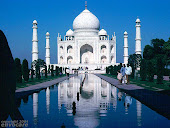
Painting Iteams
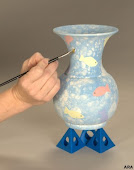
Creation of Paintings

Painting Equipments

Beautiful Rose Painting
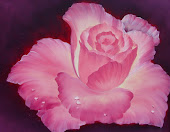
Green Nature Painting
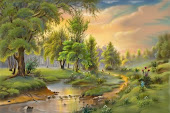
Canvas Painting

Pictute of Artist

Color Paintings
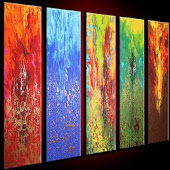
Online Paintings
